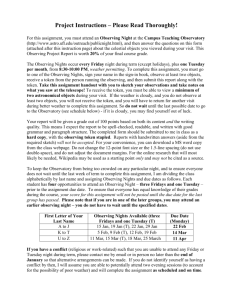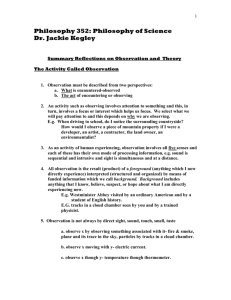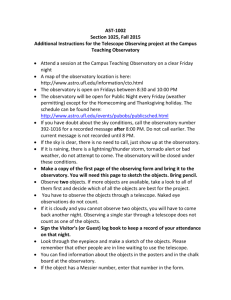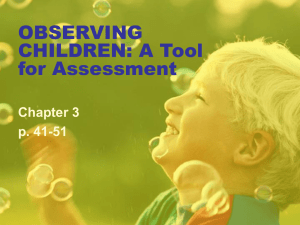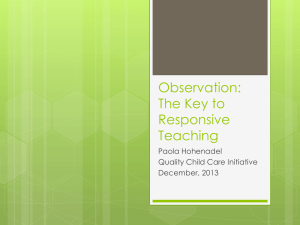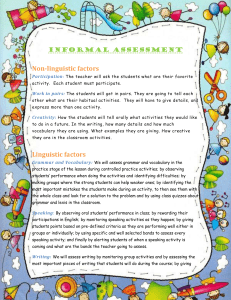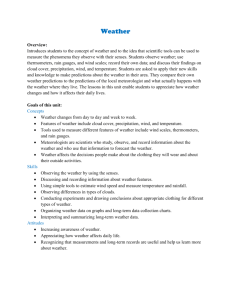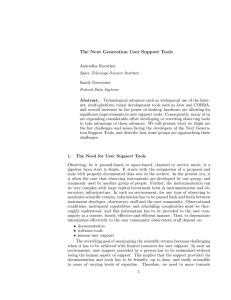Word
advertisement
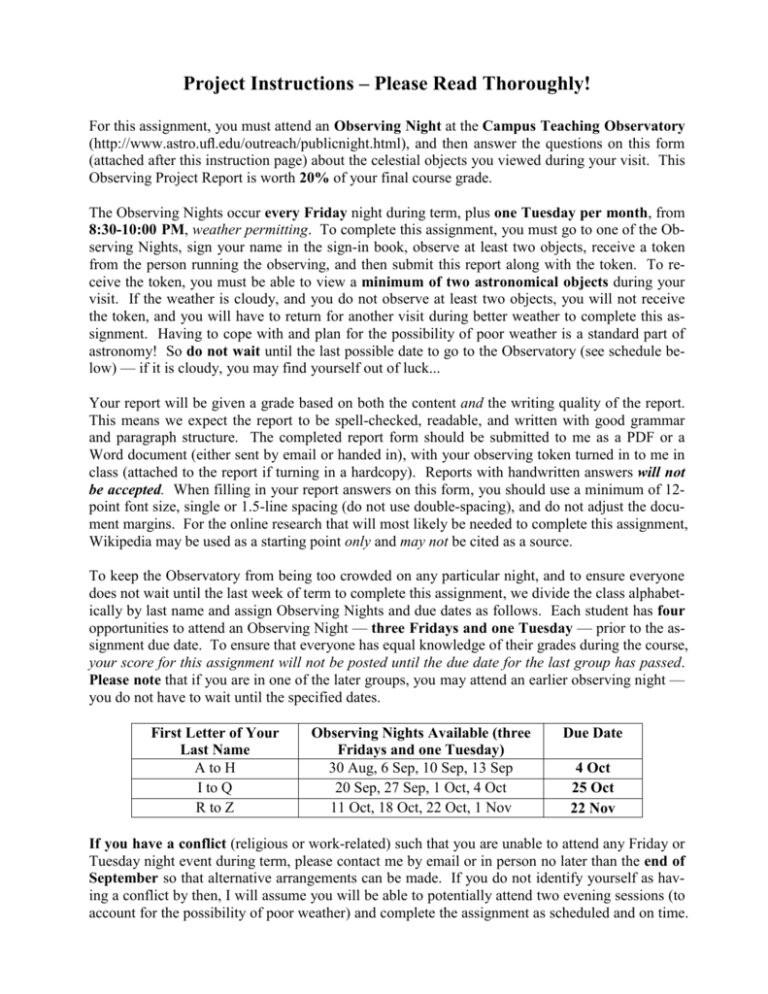
Project Instructions – Please Read Thoroughly! For this assignment, you must attend an Observing Night at the Campus Teaching Observatory (http://www.astro.ufl.edu/outreach/publicnight.html), and then answer the questions on this form (attached after this instruction page) about the celestial objects you viewed during your visit. This Observing Project Report is worth 20% of your final course grade. The Observing Nights occur every Friday night during term, plus one Tuesday per month, from 8:30-10:00 PM, weather permitting. To complete this assignment, you must go to one of the Observing Nights, sign your name in the sign-in book, observe at least two objects, receive a token from the person running the observing, and then submit this report along with the token. To receive the token, you must be able to view a minimum of two astronomical objects during your visit. If the weather is cloudy, and you do not observe at least two objects, you will not receive the token, and you will have to return for another visit during better weather to complete this assignment. Having to cope with and plan for the possibility of poor weather is a standard part of astronomy! So do not wait until the last possible date to go to the Observatory (see schedule below) — if it is cloudy, you may find yourself out of luck... Your report will be given a grade based on both the content and the writing quality of the report. This means we expect the report to be spell-checked, readable, and written with good grammar and paragraph structure. The completed report form should be submitted to me as a PDF or a Word document (either sent by email or handed in), with your observing token turned in to me in class (attached to the report if turning in a hardcopy). Reports with handwritten answers will not be accepted. When filling in your report answers on this form, you should use a minimum of 12point font size, single or 1.5-line spacing (do not use double-spacing), and do not adjust the document margins. For the online research that will most likely be needed to complete this assignment, Wikipedia may be used as a starting point only and may not be cited as a source. To keep the Observatory from being too crowded on any particular night, and to ensure everyone does not wait until the last week of term to complete this assignment, we divide the class alphabetically by last name and assign Observing Nights and due dates as follows. Each student has four opportunities to attend an Observing Night — three Fridays and one Tuesday — prior to the assignment due date. To ensure that everyone has equal knowledge of their grades during the course, your score for this assignment will not be posted until the due date for the last group has passed. Please note that if you are in one of the later groups, you may attend an earlier observing night — you do not have to wait until the specified dates. First Letter of Your Last Name A to H I to Q R to Z Observing Nights Available (three Fridays and one Tuesday) 30 Aug, 6 Sep, 10 Sep, 13 Sep 20 Sep, 27 Sep, 1 Oct, 4 Oct 11 Oct, 18 Oct, 22 Oct, 1 Nov Due Date 4 Oct 25 Oct 22 Nov If you have a conflict (religious or work-related) such that you are unable to attend any Friday or Tuesday night event during term, please contact me by email or in person no later than the end of September so that alternative arrangements can be made. If you do not identify yourself as having a conflict by then, I will assume you will be able to potentially attend two evening sessions (to account for the possibility of poor weather) and complete the assignment as scheduled and on time. Observatory Report AST1002 Attach Token Here: Name: _________________________________ Date: __________________________________ You must obtain a token from the observatory staff during your visit to the observatory. Time: _________________________________ 1. Make a sketch of both objects you observe at the Campus Teaching Observatory (choose any two if you observed more than two). Include the type of object (e.g. planet), name (e.g. Jupiter) and approximate distance of each object from Earth (you may look for this information in your textbook or online but please give a reference for your number). Object Name: Object Type: Object Distance: Object Type: Object Distance: Sketch: Object Name: Sketch: 2. Describe what you observed through the telescope. Try to be as detailed and specific as possible. For example, describe the color or shape of each object. Describe only what you saw through the telescope, NOT what you think it should look like or what it looks like in pictures. If it varied much from your expectations, please describe how and explain why you think it looks different. 3. Explain the nature and astronomical significance of the objects you observed. Look for this information in your textbook or online. Give references for where you found your information. 4. Choose one of your objects. Find a news article written about this object or class of objects published in the last 5 years. Briefly summarize the article. Based on information learned in class, do you find the reporting in this article to be accurate? Does it contain any errors? Did it present new information about the object(s) that you did not already know? Please reference your article. 5. Choose one of your objects (it can be the same one used in 4). Formulate a question and hypothesis concerning this object or object type. Using information about telescopes and wavelengths of light (from textbook or other sources), come up with a way to test your hypothesis and attempt to answer your question. Remember that different wavelengths of light can be used to learn about different physical processes. Some issues to consider: Would you need the biggest telescopes on Earth, or could a smaller one be used? Do you need images or spectra? Would you need to observe the object several different times, or just once?

